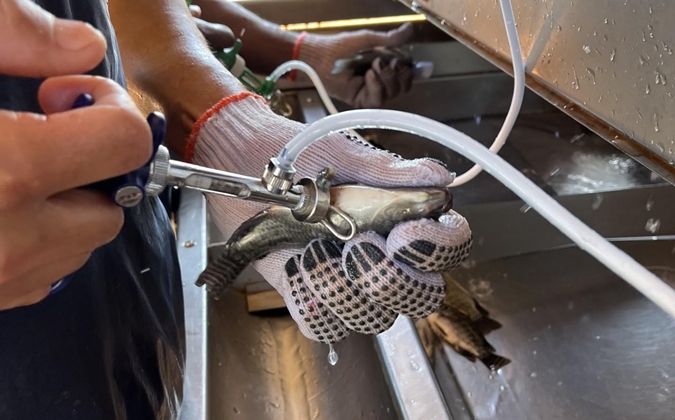
How acoustic technologies are aiding fish health and welfare
Monitoring fish using sound is on the rise in aquaculture, meeting a need to accurately assess the health and welfare of farmed-fish populations in changing environments.
In a review of recent advances in acoustic technologies used in the sector, Chinese researchers first considered alternative monitoring techniques. They noted that optical devices using cameras, often coupled with artificial intelligence (AI), are widely used in the diagnosis of disease and monitoring of fish behavior, as well as other applications such as biomass estimation. However, their use can be limited by stocking density, water turbidity and light conditions.
Implanting biosensors in fish is one alternative to optical technologies, but that has its own downsides, most notably the handling and invasiveness required; such stress can lead to disease and reduced performance.
This makes acoustic technologies, which have fewer such drawbacks and are effective over long ranges in water, a particularly promising option, the scientists wrote in the journal Reviews in Aquaculture.
Tech advancements aid understanding
There has been considerable technological advancement in this area since the initial development of underwater sound-monitoring tools in the early-to-mid 20th century, the authors noted, with complicated digital multi-beam and multi-frequency technologies now available for use on fish farms. More recent developments have included sonar imaging, with constant improvements in image resolution, processing speed and detection ranges, leading to the development of 3D views of fish and their activity.
Acoustic devices have allowed detailed monitoring of swimming behavior and spatial distribution, which can illustrate hunger, stress and general fish health, so serving as useful welfare indicators for producers.
Monitoring of swimming behavior in sea cages has been achieved in populations of fish including Atlantic salmon, Chinook salmon and gilthead seabream using acoustic telemetry, they explained. This approach uses tags with integrated depth and acceleration sensors and can distinguish feeding behavior and other activities, as well as indicate changes in water quality.
Noise monitoring in offshore net pens using hydrophones is also useful in improving fish welfare, they continued, as anthropogenic noise, such as from sea vessels, can interrupt the communication of marine species at critical stages in their lives and result in chronic effects at population level.
AI and robotics integration ahead
Looking into the near future, the researchers predicted greater integration of AI with acoustic technologies. They also suggest three areas for future development.
First, there is an “urgent necessity” to develop an underwater robot which integrates the data from acoustic-monitoring technology such as hydrophones with that from cameras and environmental sensors, they stressed.
A fish acoustic database is also needed to bring together the wealth of acoustic data from around the world, they said, allowing standard patterns to be established for different farmed species and ultimately bringing about improvements in breeding and welfare. Finally, they suggested that continued improvement of algorithms should be pursued to enable tighter links between sounds and specific fish behaviors.
While there remain some challenges in integrating acoustic technologies with other useful monitoring tools and standardizing the interpretation of the data, “acoustic technology has outstanding application prospects in aquaculture and is indispensable for the future of the aquaculture industry,” they concluded.
You can read the full study in Reviews in Aquaculture.
Posted on: November 28, 2023






